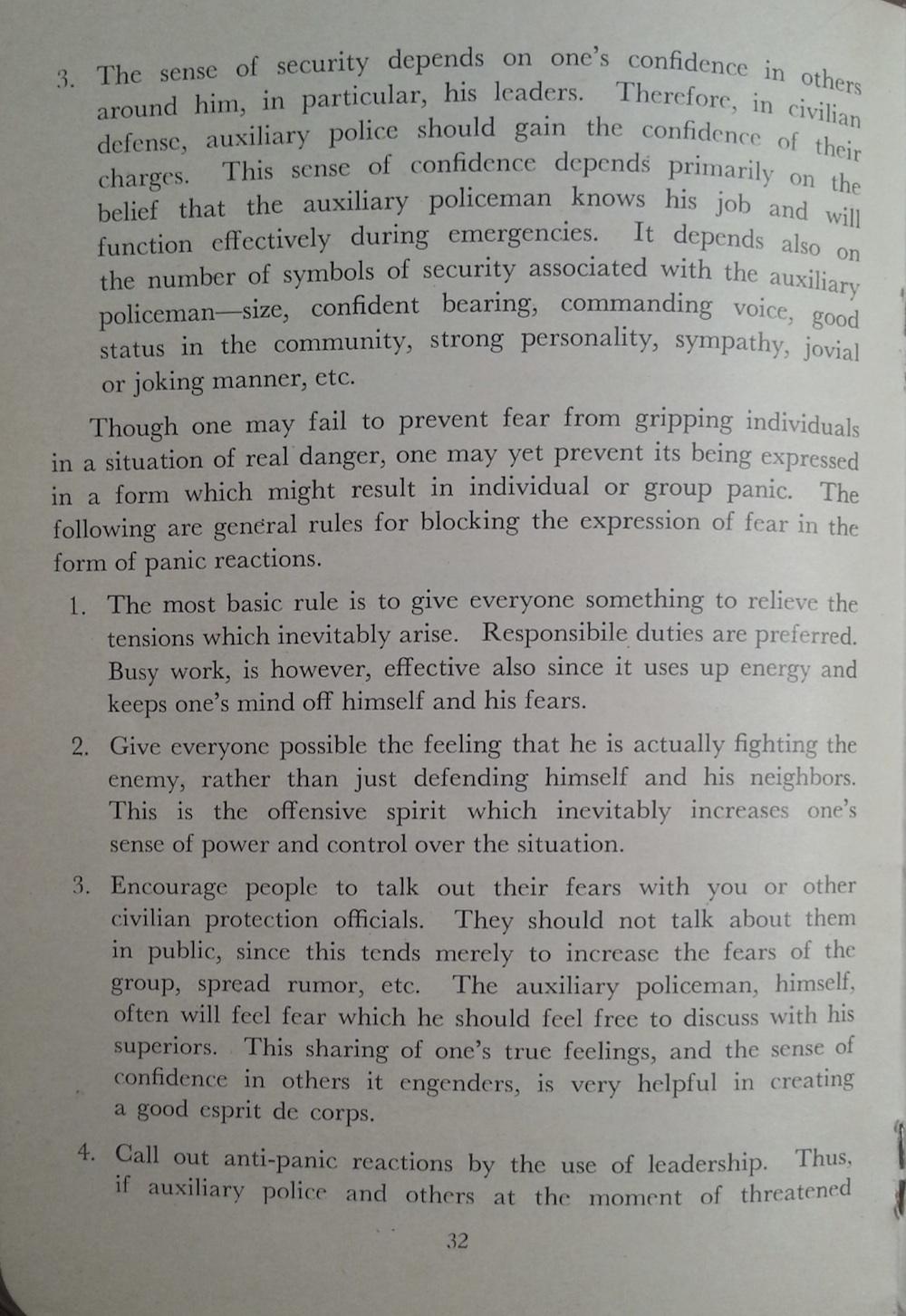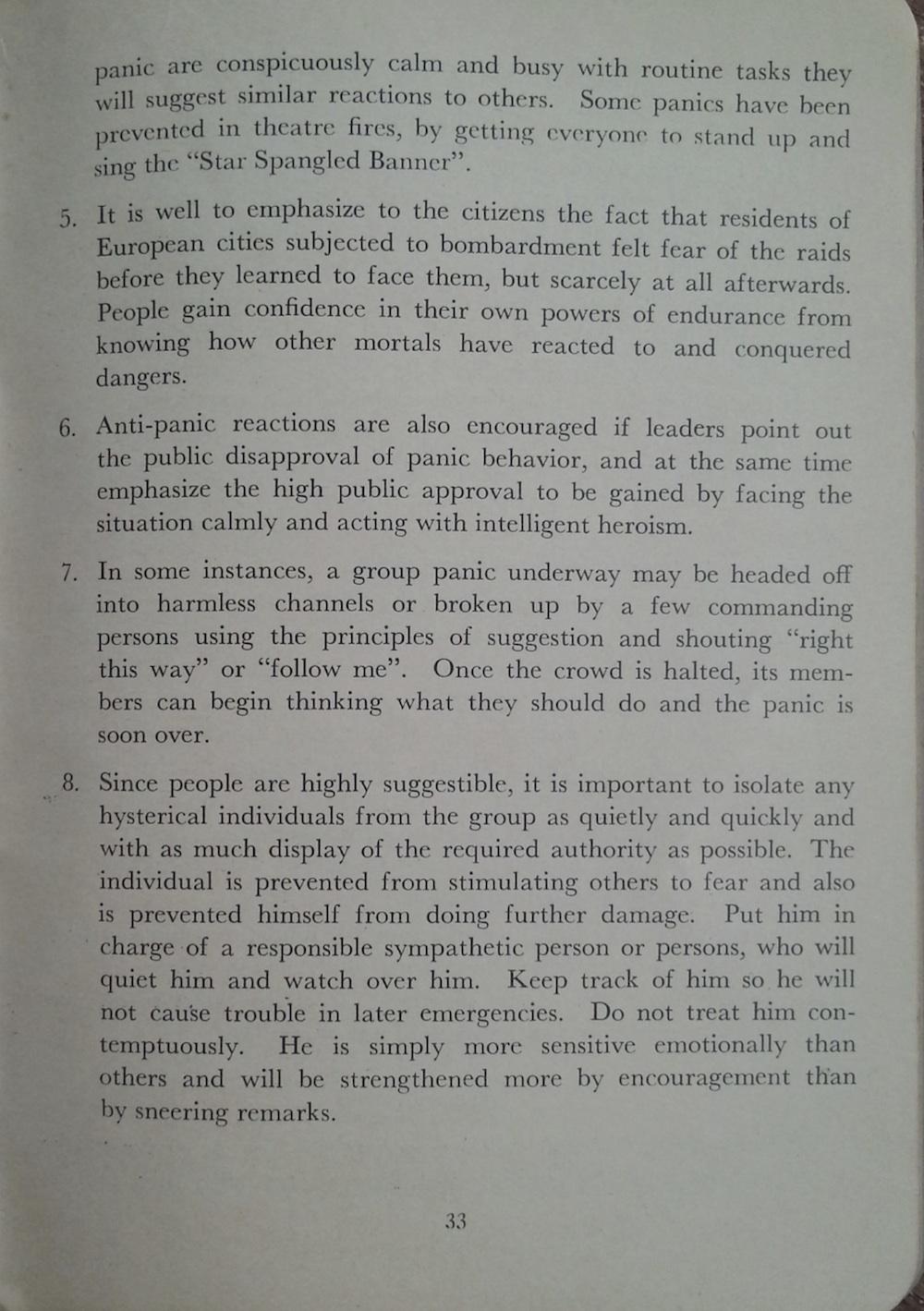The Vault is Slate’s history blog. Like us on Facebook, follow us on Twitter @slatevault, and find us on Tumblr. Find out more about what this space is all about here.
This list of recommended actions for auxiliary police officers trying to quell panic in their communities was part of a 1951 booklet published by the New York State Police in 1951. I found the pamphlet in the collections of San Francisco’s Prelinger Library.
After the passage of the Federal Civil Defense Act in 1950, which authorized the Federal Civil Defense Agency, state and local governments were directed to organize personnel in anticipation of an attack on the United States. The agency suggested that cities and townships commission auxiliary police and firefighters.
Because an attack on a nearby city would drain emergency personnel away from surrounding towns, auxiliary police were (according to the 1951 annual report of the FCDA) trained “not only to augment the normal police force within an area that is attacked, but in support areas [to] take the place of the regular police dispatched to aid stricken communities.”
Part of the auxiliary policeman’s job was to serve as a psychological beacon to his community in the case of trauma. He should use “principles of suggestion,” encourage the singing of the “Star-Spangled Banner,” and remind people how European citizens stood up to bombardment in the late war.
The “confidence” that such policemen would inspire rested on
the number of symbols of security associated with the auxiliary policeman—size, confident bearing, commanding voice, good status in the community, strong personality, sympathy, jovial or joking manner, etc.
As this list makes clear, while many public civil defense projects asked women to apply their supposed domestic expertise to home preparedness, the auxiliary policeman was probably envisioned as a role for men.

Prelinger Library

Prelinger Library

Prelinger Library